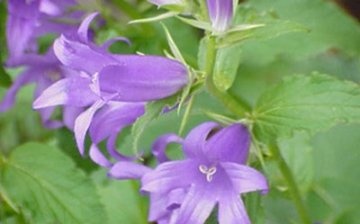Siberian bell: description of the plant
The Siberian bell is a herbaceous biennial plant. Its height is quite impressive: individual plants can reach sixty centimeters. The straight ribbed stem of this plant most often has several branches (sometimes there are specimens with completely straight stems), its leaves have a round-toothed shape with indistinct outlines and slight hairiness at the edges. In relation to the size of the plant itself, its flowers are quite small: their length rarely exceeds the mark of one and a half to two centimeters, while individual flowers are collected drooping or inclined inflorescences, which are relatively narrow and have a paniculate shape. The Siberian bell has corollas of a lilac-bluish-blue hue, the lower third of which is divided into elliptical lobes.
This plant is most common in European regions of Russia (Upper Volga region, Ladoga-Ilmensky region), in the western regions of Siberia, as well as in Central Asia and even Ukraine, more precisely, in the Dnipropetrovsk region. Moreover, this plant can most often be found in meadow steppes, dry light forests, on various fallow lands, as well as on steep steep river banks. Sometimes this flower is found as a weed in crops.
The Siberian bell is a very valuable plant from a medicinal point of view: in folk medicine, all its parts are used - leaves, stems, flowers, and the roots can be used for food. A decoction from this plant is used for rinsing with severe toothaches, diarrhea, and even for the treatment of sexually transmitted diseases.




I associate this flower with Russian folk tales. To be honest, I didn’t think that it also possesses healing properties.